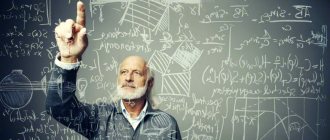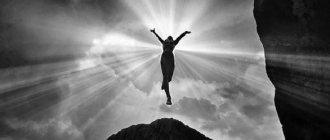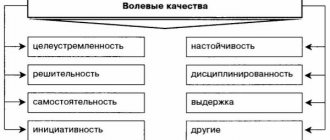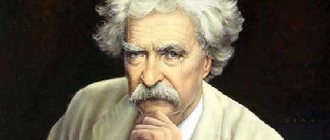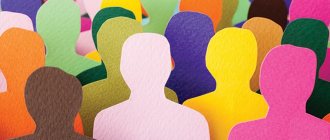The ability to be creative and create something new has always been highly valued in society. And it is not surprising, since people who have this gift are unique generators of the development of human civilization. But creativity also has subjective value. A person endowed with them creates the most comfortable conditions for existence, transforms the world, adapting it to his needs and interests.
It would seem that everything is simple: you need to actively develop these abilities. However, humanity has been struggling for hundreds of years with the question of what is the secret of creativity, what makes a person a creator.
Manifestation
Psychology defines ability as the sum of psychological and physical qualities that influence the choice of human activity.
There are general abilities that are required in most professions. These include attentiveness, intelligence, speech.
But there are other abilities that make a person stand out from the crowd. This is a keen ear for a musician, a creative vision and a sense of color for an artist.
You can’t put off starting to create!
The main problem in the development of creativity is overcoming internal barriers, limiting beliefs “gifted” to us in childhood: we consider many things “impossible” by definition.
We fear that if we paint our front door with sunflowers, we will become the object of ridicule from others. And therefore we don’t even try to carry out impossible, beautiful, sometimes vital creativity - big and small, justifying ourselves with “adult”, “objective” justifications.
And then we pass on these barriers to our children, forcing them to give up the magical ability to see the unusual in everyday life, programming their choices in advance and encouraging them to suppress their feelings. And that’s why the most difficult thing in adulthood is to start creating .
Probably one of the most important aspects for which our right hemisphere is responsible is a sense of humor and resourcefulness. Agree that the ability to laugh heartily at a problem is the key to solving this problem. It is not for nothing that in world literature there are so many heroes - geniuses of resourcefulness:
“Khoja was besieged by people from morning to evening, so he had no time left for reading, contemplation, or prayer. He didn't know what to do until a great idea came to his mind. Hoxha hung a note on the door: “For two questions, one hundred dinars.” Of course, since that day he had much more time. Then the rich man came to him and said:
“Khoja, here’s a hundred dinars, but don’t you think that’s too much for two questions?”
To which Nasreddin replied:
- Seems. What's your second question?
Get creative and laugh more often!
For independent work (searching for answers to questions, how to develop creativity ) you can read:
Tony and Bari Buzan "Super Thinking"
Marilee Zdenek "Development of the right hemisphere"
Edward de Bono "Six Thinking Hats"
If you have any questions about the article
Development
The process of developing creative abilities begins in childhood.
The main source of talent, of course, is the innate ability in children.
However, without training, the talent can dissolve, as if it never existed.
In preschoolers, the development of creative skills is much easier and faster. A child absorbs new knowledge like a sponge.
For example, in classes with preschool children, the creative potential of each child is revealed.
Children, as you know, are not withdrawn into themselves and are not influenced from outside, like adults. Such openness and attraction to new knowledge helps them absorb information several times faster.
A good teacher who works with children has a plan for developing creative thinking and skills that children master as they learn.
It's incredibly important to unleash your creativity at an early age. It is then that the foundations of personality are laid.
A child’s creative abilities will help the child both in school and in life.
Scientists have proven that people with creative thinking have greater communication skills and work activity; they are able to solve non-standard problems and introduce creative ideas into the work process.
However, if you are an adult, this does not mean that you should forget about creativity. Many people want to realize themselves in creativity because this is what they wanted in childhood. But due to circumstances, they chose a different path in life. And they succeed. The main thing here is to have a desire and a good teacher.
Play sports
Writer, philosopher and essayist Henry David Thoreau said: “When my feet begin to move, my thoughts begin to move.” He was absolutely right: Research has shown that exercise not only helps build muscle, but also stimulates neural development, improving verbal and spatial memory, alertness and creative thinking. If you don’t want your brain to start to become covered with dust, start jogging, yoga, cycling. A couple of times a week will be enough.
Creativity for adults
You can develop your creativity in different ways. Let's look at the example of drawing, what is important in self-realization.
Three things are important for an adult to realize their creative potential:
- Mindfulness. Are you sure you want to improve your drawing level?
- Practice. You enjoy drawing and regularly complete creative tasks.
- Creativity. You try different techniques, don't stop at one idea, you are in continuous search.
Spatial.
It is inherent in many creative people - artists and designers. All three types of talent are essential for architects because the profession requires good command of words, numbers, and creative skills. [p.41] Modern production increasingly requires from workers qualities that not only were not formed in the conditions of mass production, but were also deliberately reduced to a minimum, which made it possible to simplify labor and reduce the cost of labor. Such qualities include high professional skill, the ability to make independent decisions, team interaction skills, responsibility for the quality of finished products, knowledge of technology and production organization, and creative skills. Today, one of the distinctive features is the dependence of production on the quality of labor, the forms of its use, and the degree of involvement in the affairs of the enterprise. Human resource management is becoming increasingly important as a factor in increasing competitiveness and long-term development of a company. [p.33] Creative skills 412 Creative [p.734]
The skills acquired by the student as a result of studying the Macroeconomics course are used for multidimensional assessments of specific economic processes, have a significant impact on the informational, scientific, formal-logical and creative aspects of the final thesis, and can later be used in professional activities. [p.118]
PERSONAL MANAGEMENT is a field of knowledge that studies the organization of an employee’s personal work, based on the use of scientific achievements and best practices, and the use of technical means. P.m. allows you to best establish the interaction between the employee and the technical means used in the process of performing job duties. The readiness of a manager or specialist for effective work is determined by knowledge, abilities, skills and personality traits. Rationally organize mental work, create favorable conditions for increasing its effectiveness - these tasks are becoming especially important today. In any field, mental work, in addition to mental activity, contains purely organizational, technical elements, a certain part of which is common to many professions. Consequently, the problems of organizing an employee’s personal work can be studied from the point of view of the organization, the methods used, the principles and techniques of work. The second side of the organization of personal work is the technique of personal work, the technical means used in the practice of everyday work by management personnel. The scientific basis of P.m. is the sum of knowledge about the organization of personal labor, accumulated in the practice of management activities and presented in the form of principles, methods, and methods for organizing the work activities of management personnel. How the science of P.m. identifies factors and conditions for the effective work of managers and specialists, on the basis of which he develops his own theory, the content of which is the principles, forms and methods of rational activity of people in the management process. The work of a manager or specialist is not only objectively determined, but also has an initiative, creative nature. With one [p.244]
BUSINESS CAREER GOALS are the goals that a person sets for himself when entering a job and the organization when accepting him to the workplace. The person being hired needs to be able to realistically assess his business qualities, correlate his business qualities with the requirements that the organization and his work sets for him. The success of his entire career depends on this. Correct self-assessment of your skills and business traits involves knowing yourself, your strengths, weaknesses and shortcomings. Only under this condition can you correctly set career goals. A career goal cannot be called an area of activity, a specific job, position, or place on the career ladder. C.d.k. have a deeper content and are manifested in the reason why a person would like to have this specific job, to occupy a certain step on the hierarchical ladder of positions. C.d.k. may be the following: engage in an activity or have a position that corresponds to self-esteem and therefore gives moral satisfaction; obtain a job or position in an area with natural conditions that have a beneficial effect on health and allow you to organize good rest; hold a job or position that strengthens your capabilities and develops them; have a job; or creative position [p.429]
Based on the degree of complexity, solutions are divided into stereotypical and creative. Stereotyped decisions are based on a skill acquired through the accumulated experience of previous situations. Creative decisions are made in the face of unexpected situations. Individuals who make informal, creative decisions must have the ability to intuitively choose the right strategy in the game, be able to give a probabilistic assessment of winnings and losses for each decision option, use risk in the decision process, and ensure the greatest effect at the lowest cost. [p.303]
When preparing decisions, various methods are used, including methods of activating creative processes, mathematical modeling, etc. To develop decision-making skills, forms of active learning are used, which include game simulation of resolving conflict situations (individual, group) and business games. The latter represent a unique tool for reproducing the processes of identifying and coordinating economic interests. [p.304]
So, the defining element of the educational process is the teacher, his unique personality, rich creative potential, ability to improvise, and pedagogical artistry. An unconventional approach to the teaching process is implemented through variants of theatrical techniques that allow solving issues of optimizing the process of teaching a foreign language, on the one hand, and, on the other hand, developing professionally significant skills and abilities from the first days of a student’s studies at a university. The task of an artistic teacher is to have an emotional impact on students, to evoke a response in their souls, certain experiences, without which a deep perception of life and its understanding is complicated, to establish faith in oneself in the minds and hearts of the children, to create an impression with one’s attitude, with feelings, to force the imagination to play, and the game to always free choice [1]. [p.43]
In our opinion, human capital as a functional component of innovative production is knowledge, skills, practical experience, inspired by intellectual activity, which serves as a form of realization of intellectual, morally and culturally oriented human abilities to create new, previously unknown knowledge, ensuring the receipt of intellectual rent and various types of advantages over competitors. From the definition it follows that intellectual activity is the component that distinguishes the abilities for creative work from the abilities for performing work, human capital from simple labor, and determines the conditions and nature of the process of capitalization of labor abilities. [p.53]
Accounting is a system in which certain aspects of a business are quantified and recorded for use in making economic decisions. Only those aspects of entrepreneurship that can be expressed in ruble values find their way into the accounting system. If, for example, Metropol purchases a piece of equipment, that piece is recognized in the system because it has a certain value. However, the knowledge, creativity and skills possessed by a business manager with thirty years of experience are not recognized. The company's price or image of quality is also not recognized unless the company specifically purchases it from another business. The fact is that accounting [p.33]
The main goal of studying this academic discipline is to develop analytical, creative thinking in students by mastering the methodological foundations and acquiring practical skills in analyzing business activities. In the process of studying the course, students must learn to understand the essence of economic phenomena and processes, their interrelation and interdependence, be able to detail, systematize and model them, determine the influence of factors, evaluate the results achieved, and identify reserves for increasing the efficiency of the enterprise. [p.3]
Entrepreneurial spirit. Although strategic management is built as a systematic, logically connected theory based on empirical data, the success of the strategy is determined not least by foresight, intuition, the feeling of doing the right thing - i.e. everything that is defined as entrepreneurial initiative. As I. Ansoff notes, entrepreneurial behavior means creating the potential for profit where there was none before. This, in turn, requires the formation of new systems, new structures and new skills of managers, in particular, pronounced leadership traits - charisma, the ability to creatively solve problems, take risks, and plan based on entrepreneurial views. [p.13]
Dialogue is a process of collective thinking and understanding of problems and allows the group to achieve a higher degree of realization of creative abilities. Dialogue is difficult at the level of performers because it involves a free flow of conversation, and performers behave insecurely, not wanting to show weakness. For example, a number of training centers are known to offer workshops on personal vision and mental models to enhance dialogue. Basic conversational skills are taught, such as how to prevent incorrect abstract statements, how to explain an idea, how to interpret it, how to draw appropriate conclusions, and how to cool a conversation. [p.313]
Members of the task force are responsible for developing their own qualifications and continuously improving their production skills. Continuous rotation of operations creates conditions for work at all stages of the production cycle, which promotes the creativity of workers and stimulates inventive activity. This approach is widely used by Japanese companies and [p.445]
Coursework is one of the forms of independent work of students. Preparing a course work introduces students to independent, creative work with economic literature; it develops in the student the skills of a clear and consistent presentation of theoretical material; it instills skills in working with statistical and factual data, the ability to creatively apply economic theory, and connect it with practice. [p.4]
Have intelligence, creative abilities Have knowledge, skills, experience Have strength, will, energy, determination Work Have honesty, decency 9.7 7.6 6.2 4.7 2.7 30.9 [p.294]
Human capital. The body of knowledge, practical skills and creative abilities of company employees applied to performing current tasks. Its other components are the company's moral values, work culture and general approach to business. Human capital cannot be the property of the company. 2. Structural capital. This category includes hardware and software, organizational structure, patents, trademarks and everything that allows company employees to realize their productive potential - in other words, what remains in the office after employees go home. Structural capital also includes the relationships that exist between a company and its major customers. Unlike human capital, structural capital can be the property of the company, therefore, the object of purchase and sale. [p.44]
The basis of motivation in Japan is the hierarchy of ranks, which is used both in enterprises and in government agencies. Rank depends not only on qualifications, but also on length of service in the company, assistance to colleagues, readiness to perform new functions, etc. In contrast to management styles based on a fixed division of labor (which is typical for Western countries, also for Russia) Japanese workers and employees are encouraged for mastering a wide range of knowledge and skills, creative activity, the ability to work in a team, and find compromise solutions in the interests of the company. Rank of an employee of a Japanese company [p.122]
A person’s participation in economic activity is characterized by his needs and the ability to satisfy them, which are determined primarily by the characteristics of labor potential: health, morality, creativity, activity, education, professionalism, organization, and working time resources. Thus, a person in a market economy acts, on the one hand, as a consumer of goods produced by enterprises, and on the other, as the owner of the abilities, knowledge and skills necessary for enterprises, government and public bodies. [p.265]
Mastery. Employees who receive job satisfaction strive to improve their skills and apply new methods, and this further increases their interest in work. Therefore, especially when communicating with qualified specialists, you need to try to influence professional pride. It is worth emphasizing the creative aspects of controlling. [p.159]
The practical experience of successfully operating companies shows that segmentation itself is a complex and labor-intensive process, creative in its essence, requiring serious experience, good knowledge and skills in marketing activities in general. All this is all the more important because there is still no formalized or established methodology for market segmentation. Moreover, firms carefully keep their experience in segmenting traditional markets secret. There are, however, certain recommendations in every printed work on marketing, but these are just general provisions. [p.48]
Advantages. A situational interview provides some insight into a candidate's decision making, skills, judgment and creativity. This is interesting to the interviewer and the candidate. [p.77]
Scientific work skills and extraordinary analytical abilities helped G. Emerson to generalize and creatively comprehend rich practical experience, which was reflected in his main work Twelve Principles of Productivity, which was published in 1912. The main attention in this work is paid to the concept of productivity (i.e. e. efficiency), by which he understood the optimal relationship between total costs and economic results. [p.200]
In systems, personnel training is not an isolated function. This is largely the task of a general working group with multiple qualifications. Members of the target group are responsible for raising their own qualifications and continuously improving their production skills. The constant turnover of operations creates conditions for work at all stages of the production cycle, which contributes to a high level of creativity and inventive activity. [p.368]
Professional training should be based on the skills and abilities necessary for successful implementation of market requirements. Increased skill levels reduce the need for supervision and reduce the number of management levels. Rotating operations encourages creativity and invention. [p.132]
An individual's abilities can be classified into mechanical, motor-coordination, mental and creative. Many of these abilities are determined by genetic factors and are difficult to train (for example, finger fluency and reaction speed), while others such as communication and leadership skills are amenable. A person acquires skills in these areas at home, at school, at universities, and at work. [p.45]
Human capital is the sum of the collective knowledge of an enterprise's personnel, their creativity, problem-solving skills, leadership qualities, entrepreneurial and management skills. This also includes psychometric data and information about the behavior of individuals in various situations, for example, in team work or in stressful situations. [p.44]
The creative potential of an employee includes his adaptive, creative, innovative, heuristic abilities, knowledge, skills and abilities implemented in the labor sphere. [p.210]
However, it should be remembered that the work of a leader is not only objectively determined, but also has an initiative, creative nature. In this regard, we can say that the principles and rules of NOT require creative thinking to determine the degree of their applicability, taking into account the current production situation. In this case, the principles and rules serve only as a starting point for the manager’s work to improve his individual working style, skills and methods of organizing his work. [p.313]
Since consulting is not only an intellectual, but also a creative profession, the training of a consultant should be built more on the principle of a “creative workshop” than on the principle of a “technical university.” Active learning methods (training, analysis of specific situations, game technology) should be used to the maximum extent, personal creative skills and abilities should be formed, although with the obligatory mastery of the “craft”, i.e. technologies of the profession. It is advisable to include an internship in the initial training program, i.e. practical (field) training in the process of implementing consulting projects under the guidance of a mentor. [p.165]
A Japanese child must memorize thousands of ideograms. And of course, at the same time, he does not at all develop the skills of sequential processes of mental activity (in psychology they are called successive), so necessary for creativity. Only his skills in operating with images become more acute (in psychology they are called simultaneous). Analysis of thinking, writes the famous Soviet psychologist S. L. Rubinstein, reveals the closest connection between thinking and speech and language [53, p. 102]. Creative thinking requires both successive and simultaneous processes. The Japanese develop mainly only the latter. Their creativity suffers as a result. [p.32]
THE LABOR POTENTIAL OF AN EMPLOYEE is a set of human qualities that determine the possibility and boundaries of his participation in labor activity. Main components T.p.r. age health (physical and mental state, weight, diet and quality of nutrition, physical education and sports, drinking alcohol, smoking, etc.) personal characteristics (type of temperament, character traits, etc.) training (general educational, professional , economic ability for professional growth, continuous education, etc.) attitude to work (creativity, discipline, responsibility, initiative, etc.) experience, work skills, work experience in a given profession, specialty marital status (marital, single, presence of children, financial situation of the family, microclimate in the family, etc.). Each of the considered generalized characteristics can be disaggregated and, within the framework of its overall assessment, an assessment of each of its individual elements and sub-elements can be given. The more differentiated T.p.r., the deeper and more complete its measurement. Basis T.p.r. - qualities inherent in nature. This applies to health (physical and mental), creative abilities and, to some extent, to the moral orientation of the individual. The development of natural data and their implementation are determined by three main systems - family, work collective, society. [p.389]
Abilities for performing work are characterized by a set of specific physical and neuropsychic potentials of a person, professional qualification knowledge, skills, abilities, production experience - everything that predetermines reproductive labor activity within the framework of material production. Abilities for creative work are abilities for performing work, fertilized by intellectual activity, aimed primarily at self-development and self-realization of the individual in the system of social organization of production. The main and distinctive component of the abilities for creative work is intellectual activity, thanks to which reproductive labor activity is filled with creative power. [p.53]
Competitors may use pricing policies to gain market share or earn higher profits. This requires identifying price trends over time because large changes in competitors' profits are often the last link in a chain of small fluctuations over many years. While analyzing relative costs requires skill and some creativity, collecting information about competitors' prices is relatively simple. If competitors sell more than one product, then a competitor price index can be calculated. The accuracy of the calculations is rechecked based on total income. [p.396]
In the modern world, the word "Wapakununk" could be interpreted as gaining competence, confidence and comfort in constantly changing life conditions. The current educational system, however, by requiring rote memorization instead of creative thinking, narrow specialization before universal skills, the need to be hired instead of entrepreneurs who have complete control over money and business, teaches people to be inflexible instead of the ability to change from time to time. Too many young people come out of school being anything but "Wapakununk." [p.90]
The differentiation strategy is to produce unique, individualized products, taking into account the specific requirements of each consumer group and thereby transfer competition to the level of quality and technical properties of products. Differentiation may also include creating a brand image, special after-sales service. The application of this strategy requires marketing skills, creativity, and production flexibility. The danger is that often for buyers the price is no less important than the properties of the product. In addition, sometimes differentiation comes down to imitation, and as soon as consumers begin to understand this, the pseudo-differentiation strategy stops “working.” [p.185]
Differentiation Strong marketing capabilities Technical product design Creativity capabilities Strong research capabilities Enterprise reputation for quality or technological leadership Long tradition in the business or a unique combination of skills drawn from other businesses Strong cooperation across channels Good coordination of research, development and marketing functions Subjective measurements and incentives instead of quantitative measures Convenience to attract highly skilled workers, scientists and creative thinkers [p.73]
Exercises
The topic of developing creative abilities is gaining increasing relevance these days. Self-education is very popular. People want to learn new things and try themselves in new areas.
The creative abilities of an individual can be trained. How do you know whether a person has developed creative abilities or not? If you are interested in this, here are two exercises:
The “Association Game” exercise is aimed at creative work and generating ideas. Take a piece of paper and write down on it the first word that comes to your mind. It should be an abstract word that you are not attached to. For example, "piano".
Then, once you've chosen a word, remember the first association that comes to mind. There is no need to think long and specially come up with an association. It should be spontaneous and unconscious.
It is important that you come up with each new association for a new word.
Let's trace two chains of associations:
Piano – notes – musician – artist – stage – performance.
Piano – keys – yin and yang – China – porcelain – auction.
- In the first case, the associations are in the same topic. The person failed to go beyond stereotypical thinking.
- In the second case, the associations are in an unconditional connection with each other, but the course of thinking itself changes its direction from one area to a completely different one.
From these examples it is clear that the second chain of associations belongs to a person with more developed creative abilities.
This game is useful for both adults and children to play. An effective method that trains intellectual and creative abilities.
The second exercise, “Universal Subject,” trains creative thinking, imagination, and imaginative thinking.
Name any item that comes to mind first. And then figure out how it can be used other than its intended purpose. The larger the number of words in the resulting chain, the more creative you think.
For example, the word “frying pan”. It can be used as a fan, tray, palette, cap, umbrella, tennis racket...etc.
This game can be played in a group. Anyone who does not come up with a new purpose leaves the circle. This way, the most creative person in the company is identified.
Abilities and their role in activities
Before we talk about creativity, let's first understand what abilities are in general.
In psychology, ability is understood as a complex of physical and mental qualities of a person that provide him with the opportunity to engage in a certain type of activity:
- There are general abilities needed in different areas, such as intelligence.
- And there are special ones associated only with one specific activity. For example, a musician, singer and composer need an ear for music, and a high sensitivity to color discrimination is needed by a painter.
The basis of abilities are innate, natural inclinations, but abilities are manifested and developed in activity. To learn to draw well, you need to master painting, drawing, composition, etc., to achieve success in sports, you need to engage in this sport. Otherwise, in no way, the inclinations themselves will not become abilities, much less turn into talent.
But how is creativity related to all this, since this is not a special type of activity, but rather its level, and a creative gift can manifest itself in any area of life?
Special Skills
The challenges of developing creativity include connecting an idea and a practical solution. In any creative field, simply having an original idea is not enough. It is very important to know how to implement it. This is why people study for many years and acquire mastery.
Young musicians study notes and musical literacy, and then transfer their theoretical knowledge to practice. Bringing these two aspects together takes a long time.
Formation and development of practical skills allows you to realize all the ideas that are in your head.
Are you familiar with the situation when you have a beautiful image formed in your head, which you tried to depict on a piece of paper, but got nothing but disappointment?
This problem arises precisely due to the lack of proper drawing skills. Many people mistakenly think that they are mediocre and lack creativity. However, it is not.
During training, a person acquires the necessary skills that transform him from an amateur into a master. And his work becomes art.
It often happens that the desire and need for drawing is not fulfilled, and a person’s creative potential is not realized. You may have high creative potential, but if you fail to realize it in time, you will say goodbye to creativity and feel empty.
There is no such thing as a creative personality type
Then stubborn guys in white coats began to look for creative inclinations in a person’s personal qualities: a huge amount of information was collected about the outstanding creators of the 20th century, after which everyone passed the virtual test “five-factor model of personality.” Scientists expected that creative people would have a bias in one of five personality characteristics (openness to experience, conscientiousness, extraversion, agreeableness and neuroticism), but again the finger in the sky - among the subjects there were neurasthenics, extroverts, friendly drunks, and many more Who. Conclusion: there is no creative personality type.
Having abandoned psychology, they began to look for the creative muscle in the human brain. Researchers did not give a damn about Einstein’s request for cremation and immediately after the death of the genius they began to study his skull. And again disappointment: the brain of the famous physicist was no different from the brain of a professional baseball player or a homeless person who had been hit by a car. The third round of slingshot shooting at airplanes is completed, the scientists are “on fire” with a score of 3:0.
Creativity and Intelligence
An interesting fact is that the most creative people are those with average intelligence. Among people whose IQ is below 100, creativity and creativity are not observed.
Those whose intelligence is over 130 are hampered by logic and rationalism. They do not allow creativity to “grow”.
Thus, we can conclude that high intellectual abilities do not guarantee high creative success.
Along with the IQ coefficient, a creativity coefficient was created - Cr. There are special tests to determine your level of creativity.
Determining the presence of creativity
Children who have become adults, whose talents were not discovered in a timely manner, can try to discover their creative abilities and begin to develop them. This will help determine the area of work in which a person will work with maximum efficiency, as well as choose a favorite hobby, and therefore improve the quality of life.
There are various tests that reveal creativity, but to assess the result you need to consult a psychologist. Only he can draw the right conclusion.
The main sign of having the ability to create is an interest in intellectual activity, when you want to do it without coercion.
There are three levels of such activity:
- Stimulating and productive. A person is able to work productively, effectively performing the tasks assigned to him, but he does this under external influence (without internal need) and does not try to use new methods in his activities;
- Heuristic. A person works within the framework of the proposed method of action, but at the same time tries to apply an original solution to individual problems, obeying internal impulses;
- Creative. Here the person himself develops new methods of action and offers them to others. Moreover, he is unusually fascinated by the study of each emerging problem.
Creativity in a team
Using these criteria, you can determine who a person is: a source of ideas, or a creative person, someone who brings them to life and improves them, or a heuristician, or a practitioner who puts them into practice.
Children's activities
Separately, I would like to talk about children's creative activities. Many parents strive to send their children to various sections and clubs. And this is correct, since it is in childhood that special skills are laid and developed.
Drawing is responsible for the development of creative abilities like no other subject.
Nowadays, there are various technologies and means to ensure that learning proceeds with comfort for the child, and knowledge gradually settles into the head.
What skills does the child acquire?
- Concentration. The child focuses on his actions and analyzes the result.
- Intellectual development. The brain receives a lot of new information and connects tactile and visual sensations.
- Color and its nature. When mixing colors, the child learns that he can not only create a new color, but also choose it.
- Fine motor skills. Working with a pencil and brush makes you better with your pens.
- Mindfulness. The child understands that he can create a new image that he chooses himself.
A drawing lesson can often give you more than you expect.
The means for developing children's creative abilities are activities in creative groups or individually.
For preschool children, individual lessons are best. One-on-one contact with the teacher allows the child to better assimilate information.
It is important to give elementary school students interesting and modern tasks so that drawing will open up a completely different side for them.
Lessons to develop children's creativity may also include modeling with plasticine or salt dough. Children love to sculpt and imagine. Salt dough makes very beautiful products, which can then be fired.
General recommendations for the inner creator to grow and develop
Stick to a daily routine
In his latest work, What I Talk About When I Talk About Running, Haruki Murakami debunks the myth of the creative lazy person, talking about the fact that a strict daily routine (getting up at 5 a.m., bedtime at 10 pm) became the main catalyst for his performance. The mind is inclined to be capricious and find excuses for its own laziness, and following a routine takes it out of its comfort zone and teaches it to turn on half a turn.
Don't neglect other creative activities
Draw, write, learn to play the guitar or dance. Any creative activity keeps the brain in good shape, and alternating them switches attention and allows you to find answers in rather unexpected places.
According to research, more than a third of Nobel Prize laureates in literature were engaged in another form of art - painting, theater or dance. Einstein called music his second passion and, if he had not become a physicist, most likely would have become a violinist.
Don't give up
When things don't get off the ground, persevere. For example, the writer Rody Doyle says that during a stupor he begins to pour out on paper the nonsense that comes to mind. After a while, the brain stops pushing and protesting and simply turns off, releasing streams of thoughts. And Hemingway, when he sat down to write a novel, could write dozens of versions of the first sentence until he found the one he believed. Then he developed the action from it.
Don't get hung up
If persistence does not help, we go from the opposite. Take a walk, do something distracted, communicate with other people. There is a theory according to which everything has long been invented, and the creative process lies only in the combination of these ideas. And if the answers are hidden within us, we just need to tune in to the right wave and hear them. You can sit in the sun in the lotus position, concentrate on washing the dishes, walk through the forest listening to ambient music, or go jumping at a rock concert. The main thing is to do things that allow us to turn off our internal dialogue and focus on the moment.
Treat creativity like a game
Creativity is, first and foremost, fun. Don't take it too seriously. Now I will explain why. In 2001, an experiment was conducted at Maryland College in which students had to guide a mouse through a maze drawn as in childhood. The students of the first group walked forward towards the piece of cheese (positive attitude), while the second group ran away from the owl (negative attitude). Both groups completed it in the same amount of time, but the students of the second group started avoidance mechanisms, and the second group took, on average, 50% longer to solve the problems that followed the maze than the students of the first group.
Just start
Many of us in childhood dreamed of becoming musicians, artists or actors, but over time, a pragmatic approach to life pushed these dreams further into the mezzanine. Betsy Edwards has a theory that for most people today, the left side of the brain becomes dominant as they age. She is responsible for analytical thinking, the symbol system and the mode of action, and every time we try to learn to play the guitar or draw, we hear her voice, which advises us to put this bullshit aside and do something useful.
At first it will be difficult to step over the inner critic, but if you have the courage and desire, then over time his voice will become quieter, and criticism in the style of “you draw like an asshole” will be replaced by something more constructive. Getting started is the hardest thing.
Modern solution
In the modern pace of life, it can be difficult to take children to classes. How much time do we spend on the road every day? Parents are busy at work and at home.
But this does not mean that if you lack time you cannot be creative. Developing children's creative abilities via the Internet is convenient and simple.
There are online courses and schools, as well as fine art tutors who can teach you any technique. Such activities are suitable for both children and adults. Study what you've always wanted in the comfort of your own home - what could be better?
Personally, I have been teaching fine arts since 2014.
I have experience teaching both adults and children. After moving to another country, I continued teaching via Skype. The students are happy and continue to study with pleasure.
To study with me, write to me by mail or on one of the social networks. networks.
Scientific research rejects any division between the creative and corporate working classes
What can we say if in the modern corporate environment there is an artificial division into “creative” and “corporate” types who relate to each other like Gryffindor and Slytherin students. However, almost all studies of creativity that have been conducted over the past 50 years reject this division: the creative muscle has nothing to do with genetics, intelligence, or personality traits.
For example, during an experiment at the Institute for Diagnostics and Personality Research (IPAR), scientists invited several dozen successful representatives of various creative professions to the conference. Over the course of several days, they took many tests, which did not really clarify where to look for creative inclinations. The only common features of the subjects looked like this: balanced personal characteristics, above average intelligence, openness to new experiences and a tendency to choose difficult options. As you can see, nothing special.
